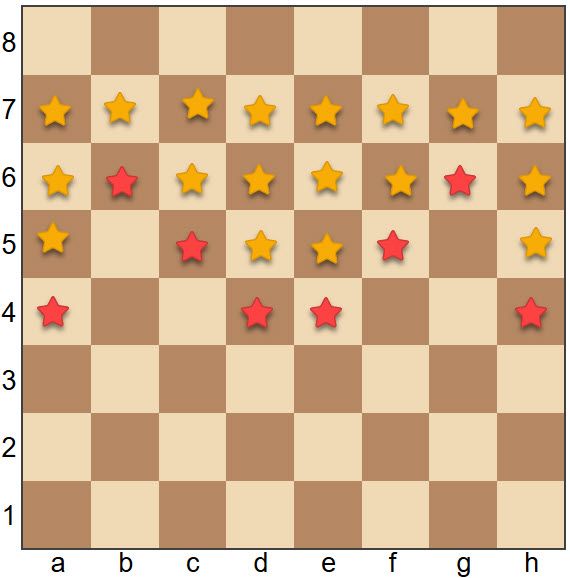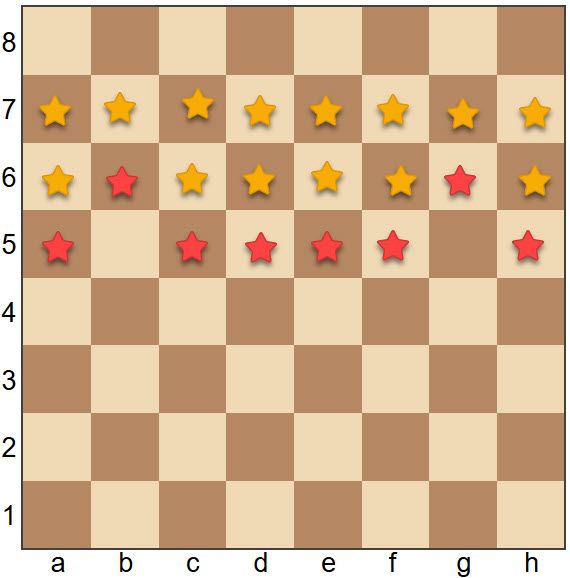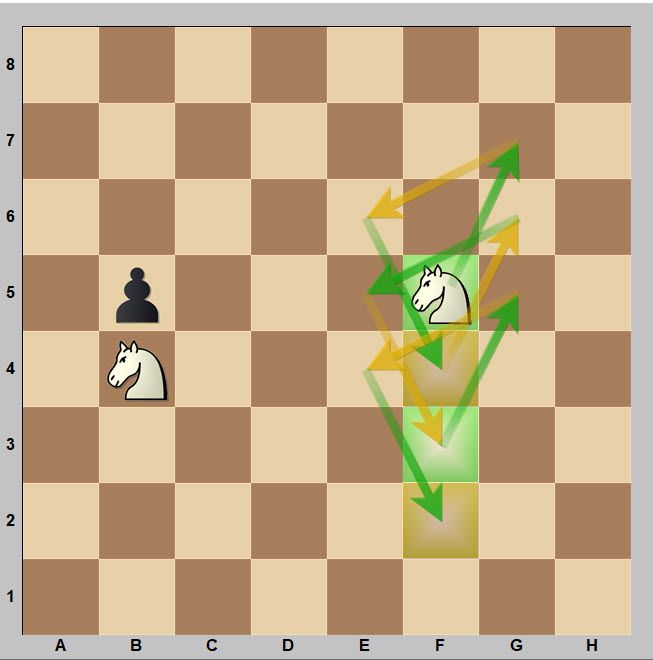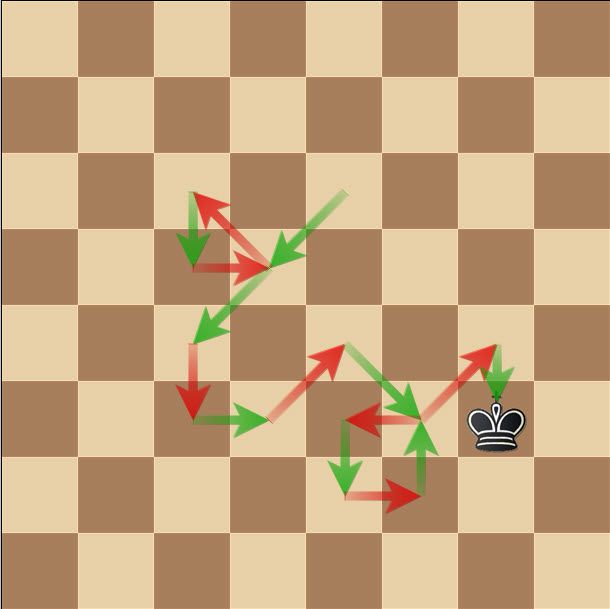In chess, one of the most difficult Checkmates to master, and the one that rarely shows up in practical play is the double Knight versus Pawn Endgame. Even grandmasters have trouble when it does show up on the board. There are several examples where GMs failed to checkmate with positions that Tablebases clearly points out a win. In the truest sense, this is one of the knightmares for chess players. And yet! Even this is a learnable skill with patience and hard work. Let’s get started!
Before we begin, there are a few rules that we must be clear about.
Two Knights Cannot Checkmate alone. The following position is a draw no matter who is to play.
White can give a check and force the black king to move to the corner, but the next knight check needed for the checkmate needs two moves, which is not possible!
An important rule to understand when you are dealing with knights is that Knights cannot waste time or lose a tempo!
Troitsky Line and second Troitsky line
There are limitations when a double knight can and cannot checkmate. This important theory was discovered by the famous chess composer Alexey Troitsky.

This position denotes the Troitsky line when White has two Knights and black has the pawn. The Red Stars denote the Troitsky line. It means that if black’s pawns are placed on this line (Red stars) or behind them (yellow star), white can force checkmate.
There was one problem though. In some of these squares, it takes more than 50 moves to checkmate.
The second Troitsky line or Muller Line:
GM Karsten Müller, the famous Endgame expert proposed a second set of Troitsky lines applicable to today’s practical play. (Checkmate Under 50 moves)

Exceptions:
There are a few exceptions to the Troitsky line though. A player can win even if the pawn has crossed the Troitsky line if the enemy king is stuck to a corner in a favorable way. Here’s an example:
It’s easy to learn this technique if you begin from the end!
Take this simple example of why Two Knights versus Pawn is a win. After cornering the enemy king, white simply has to let go of the blockade and rush to deliver checkmate.
In the below position, white uses the same method but is a few moves behind.
Now, Let’s go back a little further.
Recognizing patterns: Did you notice any common pattern of movement in the above examples?
The Clever Knight maneuver: When the enemy king gets locked down to the last file (Or the last rank), you can notice a single knight moving in a weirdly symmetrical manner. This is an important maneuver we must understand.

The Knight maneuver across a vertical or horizontal line can be achieved in different ways. Here’s the horizontal version of the same maneuver in the below example.
Useful tools: The Triangle maneuver or Triangulation.
What if I told you that this Checkmate has successfully been demonstrated as early as 1931?
Eugene Znosko-Borovsky, the Russian chess master demonstrated the checkmate a long long time ago. And in his game, we can observe both the knight maneuver as well as how the king sometimes moves in a triangle to lose a move.
If Knights cannot waste a tempo, someone else has to do that. Who else do we have but the king! Observe the King’s path from the above position until the last position.

The loops in the King path is the King moving in a triangle in order to lose a tempo and give the move to his opponent. This is very important because Knights cannot waste a move and it is futile to maneuver the Knight expecting to achieve this tempo loss miracle.
Moving the blockaded Knight: The blockaded knight can be helpful in two ways. The first is to lose a tempo. The blockade can sometimes be released so that the other knight can take care of the blockade in the next safe square. The second is that although the knight is blockaded, it can still control a few squares from the idle position, which is always helpful.
How to get this knowledge working for you? By practice 🙂
Here are a few positions and the required number of moves it will take to win. Setup the position and play with your computer to consolidate your learnings.
[Position 2: 7 moves to win]
[White to play. 12 moves to win]
Thank you for reading! Visit this link to check out our list of Endgame best-sellers for your armory! Have fun!
Bonus: One of our friends from Twitter shared a great video! Thank you Aneet! Couldn’t refrain from posting here:
- Dark Mode is now live on Web Reader - April 30, 2024
- Book Review: Tal Botvinnik 1960 - April 24, 2024
- Grandmaster Mistakes – Chess Psychology - October 27, 2021
